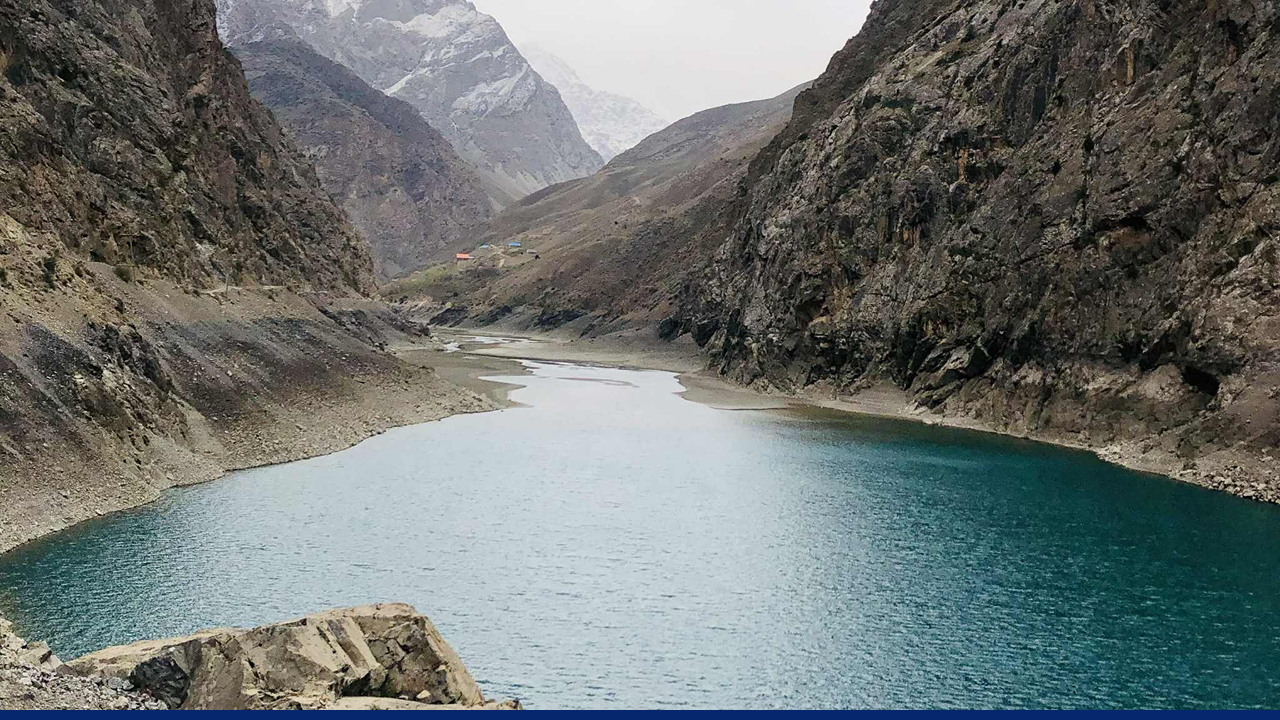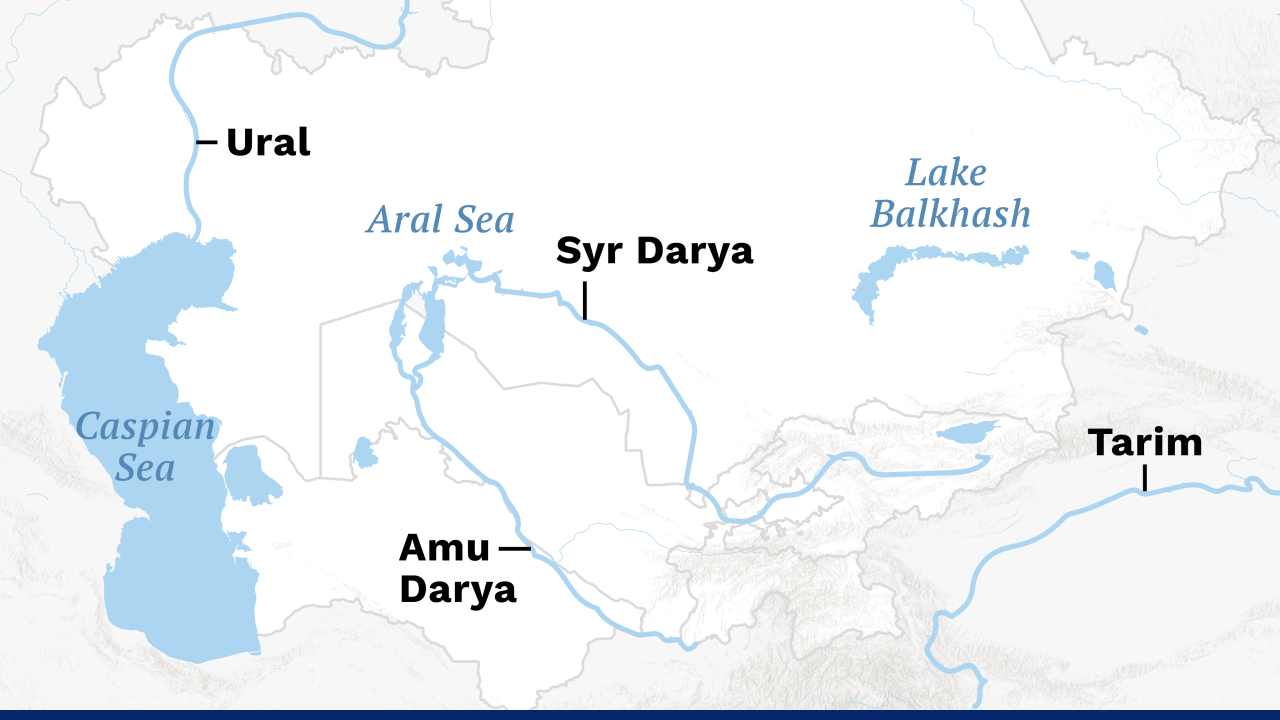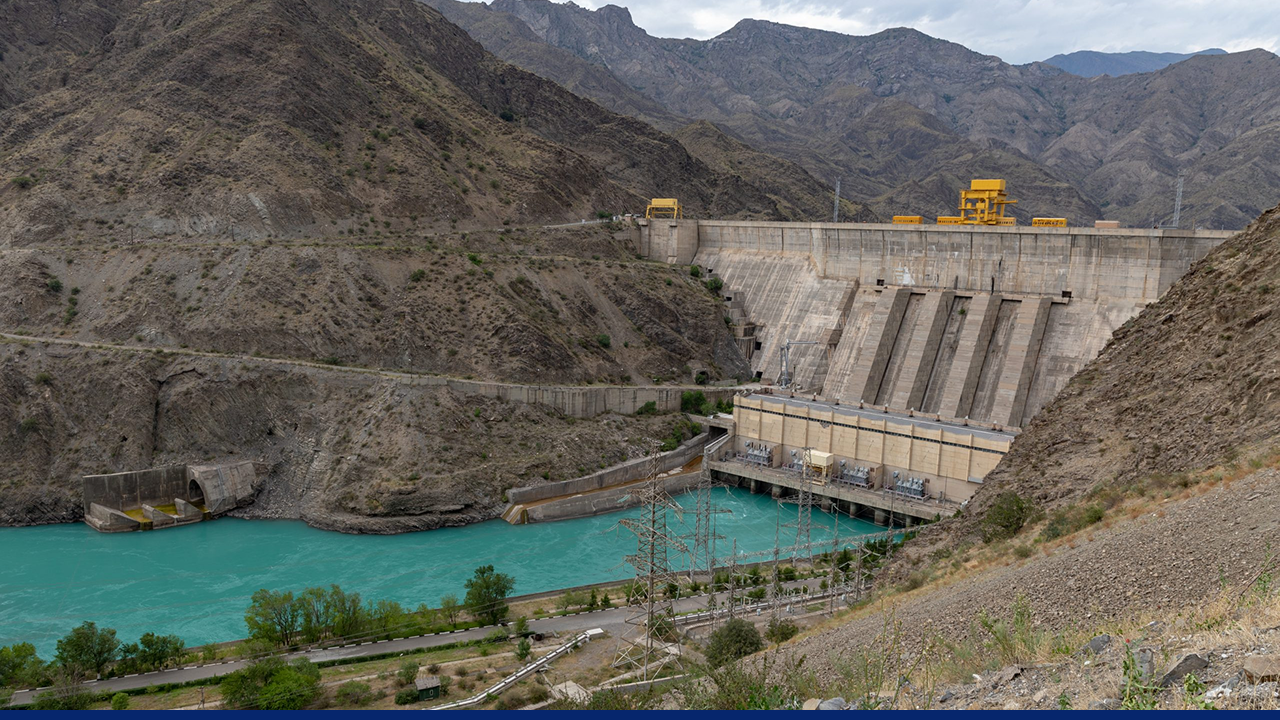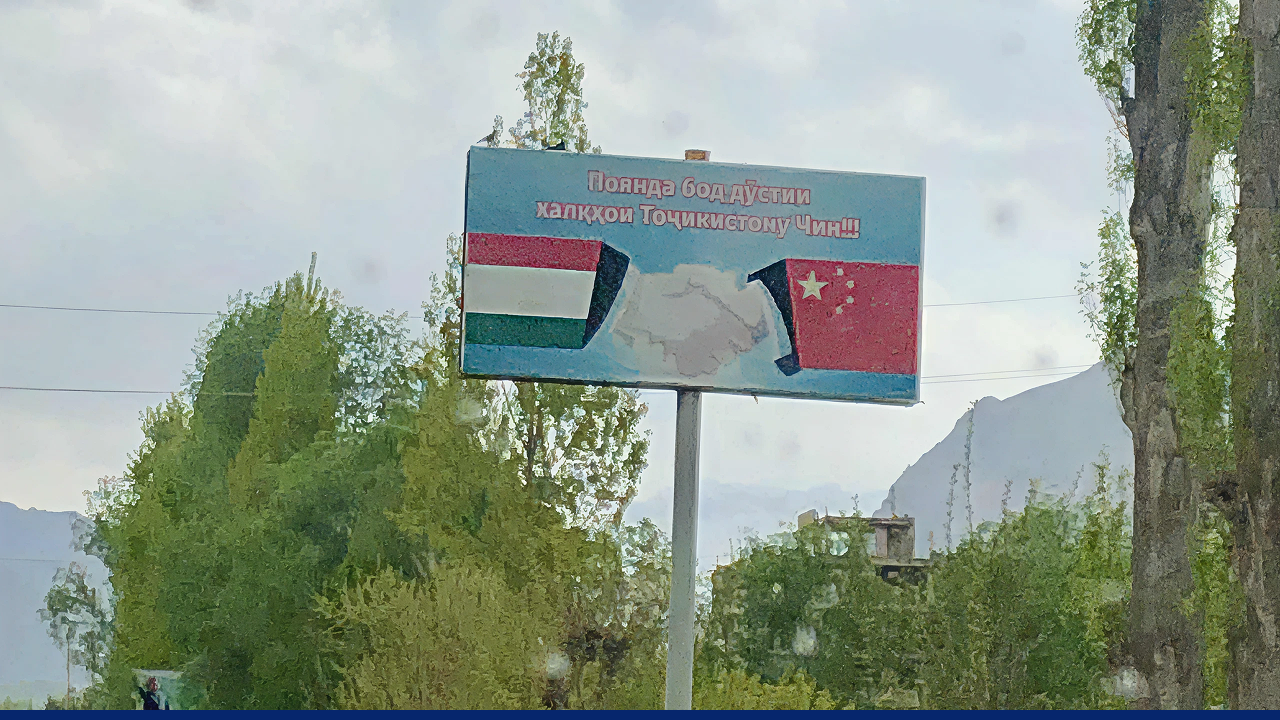10 Jul 2025
13 MIN READ
The Geopolitics of Water in Central Asia: Power, Scarcity, and Regional Stakes
Summary
Water in Central Asia is a vital yet contested resource. It drives both cooperation and conflict among the five post-Soviet republics. Soviet-era systems left a legacy of interdependence, but the USSR’s collapse turned water into a transboundary challenge. Control over rivers like the Amu Darya and Syr Darya is crucial, as it impacts agriculture, energy, and regional power dynamics.
Upstream nations seek hydropower, while downstream states need irrigation. As climate change accelerates and demand increases, the geopolitics of water becomes more complex in an already complex area.

One of the Seven Lakes in Tajikistan, a country with the "upstream advantage" due to its high-altitude glacial rivers and water-rich mountain terrain. Credits: Heidi Koelle
Importance of Water in Central Asia
Water availability varies across Central Asia. It is a lifeline to the region's agriculture, energy systems, and daily life. The main rivers that bring life to this arid region are the Amu Daya and Syr Daya.
Shared rivers create a web of interdependence among countries. This makes water key for both survival and regional stability. It also affects the political relations between the Central Asian countries, which have a complex and contested history spanning centuries.
The Soviet-era irrigation politics, which prioritized cotton production for the livelihood of the people, have left a sour taste and a sense of distrust among the people. The different priorities and ethnic tensions among these five countries pose obstacles to cooperation. However, it is imperative for the sake of all who rely on the water sources that agreements come together.
Central Asia water issue as a regional and global concern
The main rivers of the region, the Amu Darya and the Syr Darya, cross multiple borders, establishing a connection between the availability of water and the economic and political landscapes of the countries involved. Disagreements between upstream (Kyrgyzstan and Tajikistan) and downstream (Kazakhstan, Turkmenistan, and Uzbekistan) countries over the use put barriers in diplomatic ties.
The upstream countries, which control the sources, need it for hydropower, while the downstream countries require a reliable supply for agricultural purposes. This leads to increased conflict and mismanagement. Beyond local scarcity, water disputes in Central Asia affect regional stability and draw attention from global powers and international institutions due to their implications for food security, energy cooperation, and climate resilience.
The Aral Sea disaster is a powerful example of how mismanagement of natural resources can lead to large-scale environmental and socio-economic collapse. The mass desertification and the hangover are still felt today. Water conflicts play a significant role in the operation of the food and energy markets.
Many Central Asians are compelled to migrate to Russia in search of better job opportunities. In the world of International relations, the sting is also felt, particularly with Russia and China, with the most vested interest in the region. As a result, scarcity and food insecurity lead to rising prices, which in turn contribute to social unrest.
Historical Background of Water in Central Asia
Legacy of Soviet-era irrigation and dam systems
Under Soviet rule, Central Asia became a significant producer of cotton, but at a high cost. It relied on water-intensive irrigation systems. The USSR constructed numerous canals, reservoirs, and dams, including the Karakum Canal and the Toktogul Reservoir. These structures diverted water from key rivers such as the Amu Darya and Syr Darya.
They employed a top-down approach, prioritizing output over sustainability. Water flowed from the mountains in Kyrgyzstan and Tajikistan to lower areas, including Uzbekistan, Turkmenistan, and Kazakhstan.
This method led to rapid agricultural growth (mainly cotton, called “white gold”) but disrupted the natural water cycles. Their methods also led to long-term ecological harm, such as the near-disappearance of the Aral Sea, a case study in ecodisasters, and poor planning. It was a result of a lack of environmental oversight, as there was no system in place to regulate the safe extraction of water.

Rusting abandoned ship stranded in the desert of Moynaq, Uzbekistan, once a thriving Aral Sea port, now a symbol of environmental collapse and desertification. Credits: Heidi Koelle
How the collapse of the USSR reshaped control of transboundary water
The Soviet Union fell apart in 1991, resulting in the emergence of five newly independent countries in Central Asia: Kazakhstan, Kyrgyzstan, Tajikistan, Turkmenistan, and Uzbekistan. This change turned water management into a challenging cross-border issue. While the Soviet system had numerous flaws, these countries had to negotiate control over rivers, reservoirs, and canals, rather than relying on a centralized system of communication.
These now crossed international borders. Initially, no agreements governed the sharing of water or the operation of upstream dams. This lack of structure caused disputes over seasonal flows, energy needs, and irrigation plans.
Upstream countries had plenty of water but lacked fossil fuels. They wanted more control over hydroelectric power. Meanwhile, downstream states required a steady water supply for their farming operations.
The shift disrupted long-standing dependencies and revealed the region's vulnerability to conflict and mismanagement. Without binding regional frameworks, cooperation became tough. Tensions often arise, especially during dry years, making this a consistent issue in Central Asian geopolitics.
Uneven Water Distribution in Central Asia and Dependency Patterns
Water in Central Asia is unevenly spread. Upstream countries, such as Kyrgyzstan and Tajikistan, control the majority of water sources. Downstream nations, such as Uzbekistan, Turkmenistan, and Kazakhstan, rely on this flow for farming. This divide causes regional tensions, especially over dam operations and irrigation schedules.
Downstream states often lack the necessary power, so cooperative agreements are vital but challenging to achieve. Climate change and poor infrastructure worsen this imbalance. This situation increases the region's reliance on shared yet politically sensitive water resources.

Central Asia showing major rivers including the Amu Darya, Syr Darya, Ural, and Tarim, along with key water bodies like the Aral Sea, Caspian Sea, and Lake Balkhash.
Geopolitics of Water
Hydropower ambitions of upstream countries (Kyrgyzstan, Tajikistan)
Kyrgyzstan and Tajikistan are both mountainous and lack energy resources. They view hydropower as crucial for energy security and economic growth. They plan to utilize the strong rivers, such as the Naryn and Vakhsh, through projects like Kambarata-1 and the Rogun Dam. However, storing water in upstream reservoirs for winter power cuts summer flow. This is when water is most needed for farming. These issues highlight the conflict between seasonal water needs and national objectives. Thus, hydropower development becomes a key geopolitical tension in Central Asia's water-sharing situation.
Irrigation needs of downstream nations (Uzbekistan, Kazakhstan, Turkmenistan)
Uzbekistan, Kazakhstan, and Turkmenistan rely on river water from upstream states for irrigation. They use this water for crops like cotton and wheat. During the Soviet era, water sharing was centrally managed; however, coordination has since broken down. Downstream countries need steady summer flows. The upstream water retention for hydropower threatens this supply. This exacerbates issues such as desertification and the Aral Sea crisis. Water allocation is now a strategic and political challenge for the region.
Ongoing water issues in Central Asia and their geopolitical stakes
Central Asia's water issues continue to worsen. Climate change, aging infrastructure, and changing national priorities are key factors. Melting glaciers and uneven rainfall cut long-term water supplies. At the same time, population growth raises water demand.
Political mistrust hinders cooperation on water sharing and infrastructure. Transboundary rivers serve as leverage. Upstream states seek control over the timing of the flow, while downstream nations require greater reliability and predictability.
With the absence of a substantial regional water agreement, the risk of conflicts is likely to continue increasing. Experts emphasize that diplomacy and collaborative water management are crucial to achieving long-term stability, food security, and sustainable development in the region.

Rogun Dam in Tajikistan, a major hydroelectric project on the Vakhsh River, symbolizes the country's upstream control and influence over Central Asia's transboundary water resources. Credits: Rogun HPP galleries
External Factors and Influence in Central Asia
Russia’s involvement as a former hegemon
Even after the fall of the Soviet Union, the Russian presence in Central Asia remains strong. While it sidesteps direct water infrastructure projects, its presence is felt everywhere. Russia weaves a complex web of influence through diplomacy, security alliances, and economic connections.
Russia occasionally intervenes as a mediator in water disputes in Central Asia and has been relatively successful in navigating tensions. Russia prioritizes energy-water barter deals, securing mutual benefits for all parties involved. The echoes of its historical legacy resonate in many water management systems. This grants Russia an informal edge in regional politics, bolstering stability like a silent guardian.
However, Russia’s influence has been waning in the region since the War in Ukraine and its recent crackdown on Central Asian migrants. Experts also advocate that Central Asia looks to other powers for help in addressing its water crisis.
China’s interest in Belt and Road
China is the next major player in Central Asia. Although it has had a Russian hegemony for the last 200 years, China is now catching up and is heavily courting Central Asia. It is building its presence in Central Asia through the Belt and Road Initiative (BRI). The situation with its water is no exception. Projects from this BRI involve investments in hydropower and infrastructure in Kyrgyzstan and Tajikistan.
These projects aid local development, but they also create concerns about debt dependency. Some worry about China's long-term control of water resources. As a growing power with its own water needs, China's role complicates water politics in Central Asia. It may alter power dynamics and make regional cooperation on shared water issues more challenging.
While China is forging better relations with Central Asians, there are also concerns about how China treats its ethnic counterparts over the border in China’s Western province of Xinjiang. While many are focused on the situation with Uygurs, there has been repression of ethnic Kazakhs and others. This could also lead to some potential resentment. However, Central Asia has largely been silent on this.

Khujand, Tajikistan: "Long live the friendship between China and Tajikistan", symbolizing growing bilateral ties. Credits: Heidi Koelle
Role of international bodies (UN, World Bank) in water diplomacy
International organizations, such as the United Nations, the World Bank, and the Asian Development Bank, play a crucial and valuable role in discussions regarding Central Asia’s water resources. They fund infrastructure upgrades, facilitate talks, and support groups such as the International Fund for Saving the Aral Sea. These organizations promote data sharing, integrated basin management, and climate resilience. They also appear less biased.
They are often blocked and delayed by regional rivalries and poor enforcement. Still, they work to depoliticize water governance and foster neutral cooperation. The projects they fund are doing something to improve water efficiency, help restore the environment, and build trust between states. Their continued involvement is essential to reducing conflict and ensuring fair use of Central Asia’s vital water resources.
Geopolitics of Central Asia: Toward Cooperation or Conflict?
Regional water-sharing agreements: progress and pitfalls
Several frameworks, including the 1992 Almaty Agreement and the Interstate Commission for Water Coordination, aim to improve regional water sharing. They have made progress in fostering dialogue, but the means of enforcement are still unclear. There are few binding commitments and limited data sharing.
Political rivalries, especially between upstream and downstream states, are weakening these efforts. Some donor-funded cooperation projects exist, but they lack long-term regional support. A significant hurdle to fair water governance is the lack of a legal system in place that balances the needs of energy and agriculture.
The future of the geopolitics of water: conflict or cooperation?
The future of water politics in Central Asia relies on other countries working together; otherwise, it is in great peril. Climate change is accelerating glacier loss and altering river flows. This makes cooperation more urgent. Investing in shared projects, exchanging data, and creating water-energy agreements could help stabilize relations and position Central Asia as a case study for successful water diplomacy.
On the other hand, if there is no trust and flexible governance, water scarcity may lead to fierce competition and nationalism, which are already prevalent in Central Asia. Moving forward will rely on political will, regional diplomacy, and the understanding that lasting stability comes from cooperation, not control, over this vital resource.

Representatives from Kazakhstan, Kyrgyzstan, Tajikistan, Turkmenistan, and Uzbekistan at the 86th Interstate Commission for Water Coordination meeting in 2023, discussing regional water management in Central Asia. Credits: Green Central Asia
Conclusion
Water in Central Asia is not only a resource but also a crucial asset that impacts politics, the economy, and security. Outdated infrastructure and the divide between upstream and downstream countries create a complicated web of interdependence. The upstream countries, Kyrgyzstan and Tajikistan, seek hydropower for energy independence, while the downstream countries, like Uzbekistan, Kazakhstan, and Turkmenistan, rely heavily on summer flows for their agriculture.
The challenges are mounting due to climate change, population growth, and issues such as the Aral Sea crisis. However, water also presents an opportunity for cooperation and diplomacy. Sustainable management, fair sharing, and regional talks could change water from a source into a path for peace. Central Asia‘s future regarding water security relies on political will, trust, and recognizing that no country can manage water alone.
People Also Ask
What is the problem with the water in Central Asia?
Central Asia faces a severe water crisis driven by multiple factors, including climate change, regional tensions, inefficient water management, and increasing water demand.
What is the Central Asia water dispute?
Water management in Central Asia has caused multiple disputes, particularly with he needs of the downstream and upstream countries.
What is water geopolitics?
Water geopolitics, also known as hydropolitics, is the study of how water becomes a factor in political relationships that influence its availability and distribution.
What are the major waterforms in Central Asia?
The two major rivers are the Amu Darya and Sry Darya. Other important rivers are the Ural, Irtysh, Hari, and Murghab rivers. The Aral Sea (although much smaller than it used to be) and Lake Balkhash are major lakes.
Which region is known as the water tower of Asia?
The Tibetan Plateau, located in the Himalayan Mountains, supplies water to nearly 2 million people.
What are transboundary water conflicts?
It refers to water conflicts that arise when multiple countries share water bodies, such as lakes and river basins.
